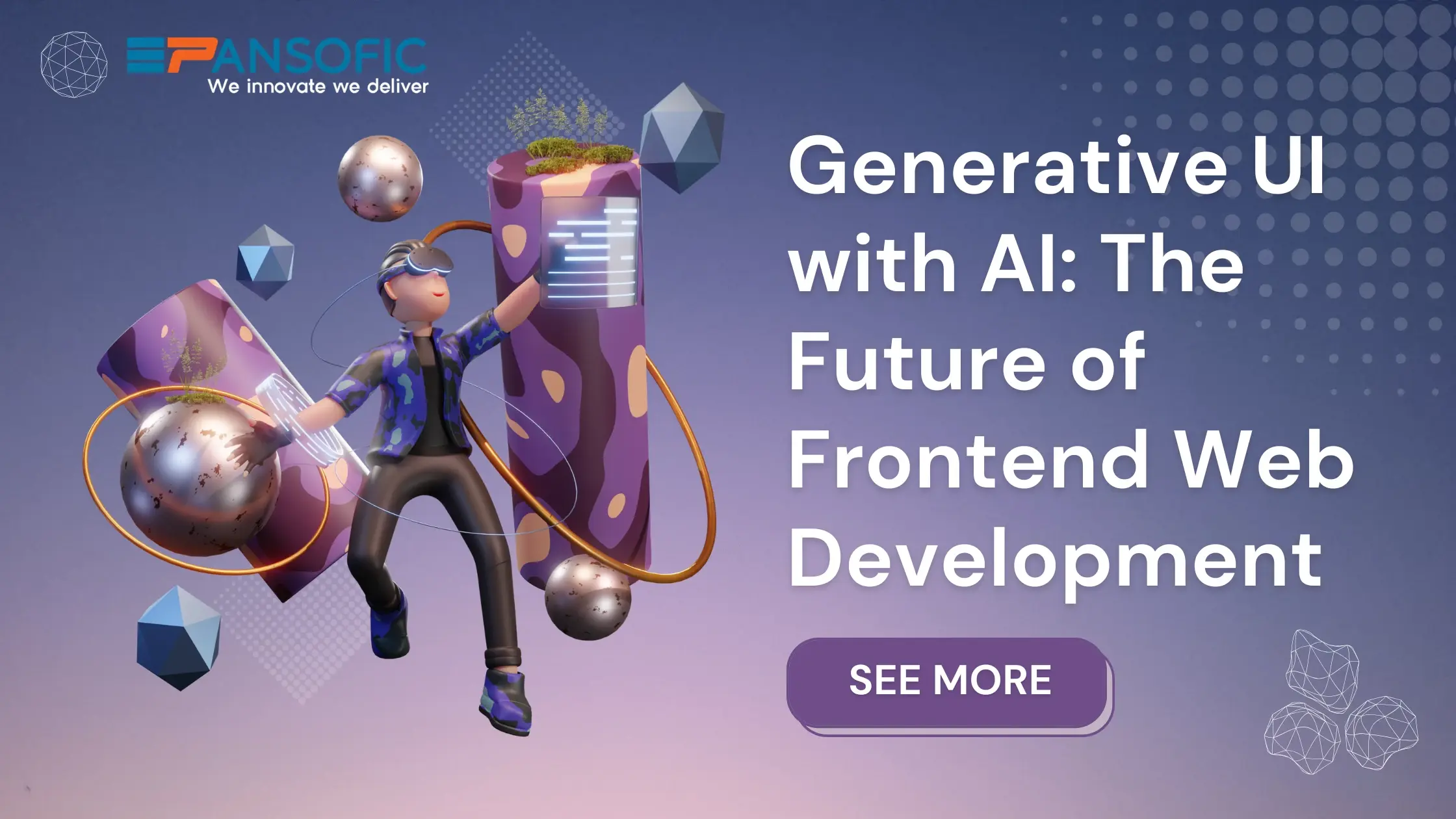Generative UI with AI is transforming frontend web development by automating design and code creation. From layout generation to adaptive components, AI empowers developers to build faster, smarter, and more personalized user interfaces, shaping the future of web experiences.

Artificial intelligence is changing the way we build and use web apps in significant ways. This is because the digital world is changing so quickly these days. Generative UI with AI is one of the most cutting-edge ideas in this field. It lets artificial intelligence create, change, or adapt user interfaces in real time, which is a game-changing way to do things.
In the past, UI/UX design was a static, manual process that took hours of wireframing, coding, and iteration. But as AI-powered front-end experiences become more popular, interfaces are becoming more flexible, smart, and responsive to how users act and what they are doing. This change speeds up development and improves the user experience by making interfaces more personalized, accessible, and adaptable than ever before.
This article will explore the meaning, technology, tools, and real-world applications of generative UI with AI, and provide developers and designers with actionable insights on how to begin leveraging this revolutionary trend.
This article will explain what generative UI with AI is, how it works, what tools are available, and how it can be used in the real world. It will also give developers and designers useful tips on how to start using this new trend.
Generative UI with AI means using AI models, like large language models (LLMs), machine learning algorithms, or neural networks, to change, structure, or adapt the user interface of a web app on the fly. Developers can now use AI to build UI components or even whole layouts based on user input, system context, or design goals, instead of hardcoding every element.
This method cuts down on a lot of manual work and lets apps make custom, optimized interfaces on the fly.
Common Characteristics:
1. Real-Time UI Adaptation
Generative UI lets web apps change in real time based on what the user does. The UI can change or prioritize certain features based on how often a user interacts with them.
2. Natural Language to Interface Generation
Developers can use tools like OpenAI's GPT models to write a simple prompt, such as "make a signup form that works on all devices and has fields for email and password," and get HTML/CSS/JS code right away.
3. Personalized User Experiences
AI can change the UI based on how users act, where they are, what they like, and what they have looked at in the past. This makes the experience more interesting, useful, and enjoyable for everyone who comes.
4. Faster Prototyping and Iteration
AI speeds up design cycles by quickly making prototypes. Developers and designers can test ideas more quickly, which leads to faster releases and lower costs of web development.
AI-Driven Design Frameworks
By instantly recommending layout elements and styling rules, AI can assist in establishing and upholding design consistency while minimizing human error and design drift.
Generation of Dynamic Components
AI systems can be integrated with frontend frameworks like React or Vue to create reusable components, dynamically voice-activated or Prompt-Based User Interface development based on data-driven logic or user intent.
Natural user interfaces can be incorporated by developers into development tools, allowing designers to simply specify their needs and have the system produce them.
The growth in generative UI adoption reflects broader trends in both AI integration and UX innovation:
Benefits of Generative UI with AI
Benefit | Description |
Speed | UIs are generated instantly, accelerating delivery cycles. |
Personalization | Interfaces are tailored to user preferences and behavior. |
Cost Efficiency | Reduces design and development overhead. |
Scalability | One AI system can generate variations for many use cases. |
Innovation | Unlocks creativity by removing manual design limitations. |
Despite its many advantages, implementing generative UI with AI also presents some challenges:
Here are some top tools and frameworks enabling generative UI with AI:
For developers, integrating these with frameworks like React, Next.js, or Vue.js allows for seamless UI generation and AI-driven customization.
What is generative UI with AI?
Generative UI with AI is a method of creating or modifying user interfaces using artificial intelligence models. It allows developers to generate interface components, layouts, or entire screens dynamically based on prompts, user data, or behavior.
How does generative UI work in frontend development?
Generative UI works by integrating AI models with frontend frameworks. These models interpret natural language prompts or behavioral data to produce UI code in real time, enabling highly responsive and personalized user experiences.
Is generative UI with AI only for large companies?
No. Thanks to accessible tools like OpenAI’s API, Vercel AI SDK, and Builder.io, even solo developers and startups can implement generative UI features in their web applications.
What are the risks of using AI for UI generation?
While generative UI can enhance efficiency and personalization, it also poses risks such as performance degradation, design inconsistency, and potential user privacy violations if not implemented responsibly.
Are there legal considerations in using AI for user personalization?
Yes. Any use of AI to analyze user behavior must comply with data privacy regulations such as GDPR in Europe, CCPA in California, and similar global laws.
Generative UI with AI is one of the most significant developments in frontend development as AI continues to spread through every facet of digital product development. It signifies a fundamental change from interfaces that are manually coded to intelligent, dynamic systems that can change in real time.
The time has come for product teams, developers, and designers to start experimenting with AI-assisted user interface creation. The future of frontend development is intelligence, not just code, whether you're creating a voice-activated design tool, an adaptive landing page, or a customized dashboard.